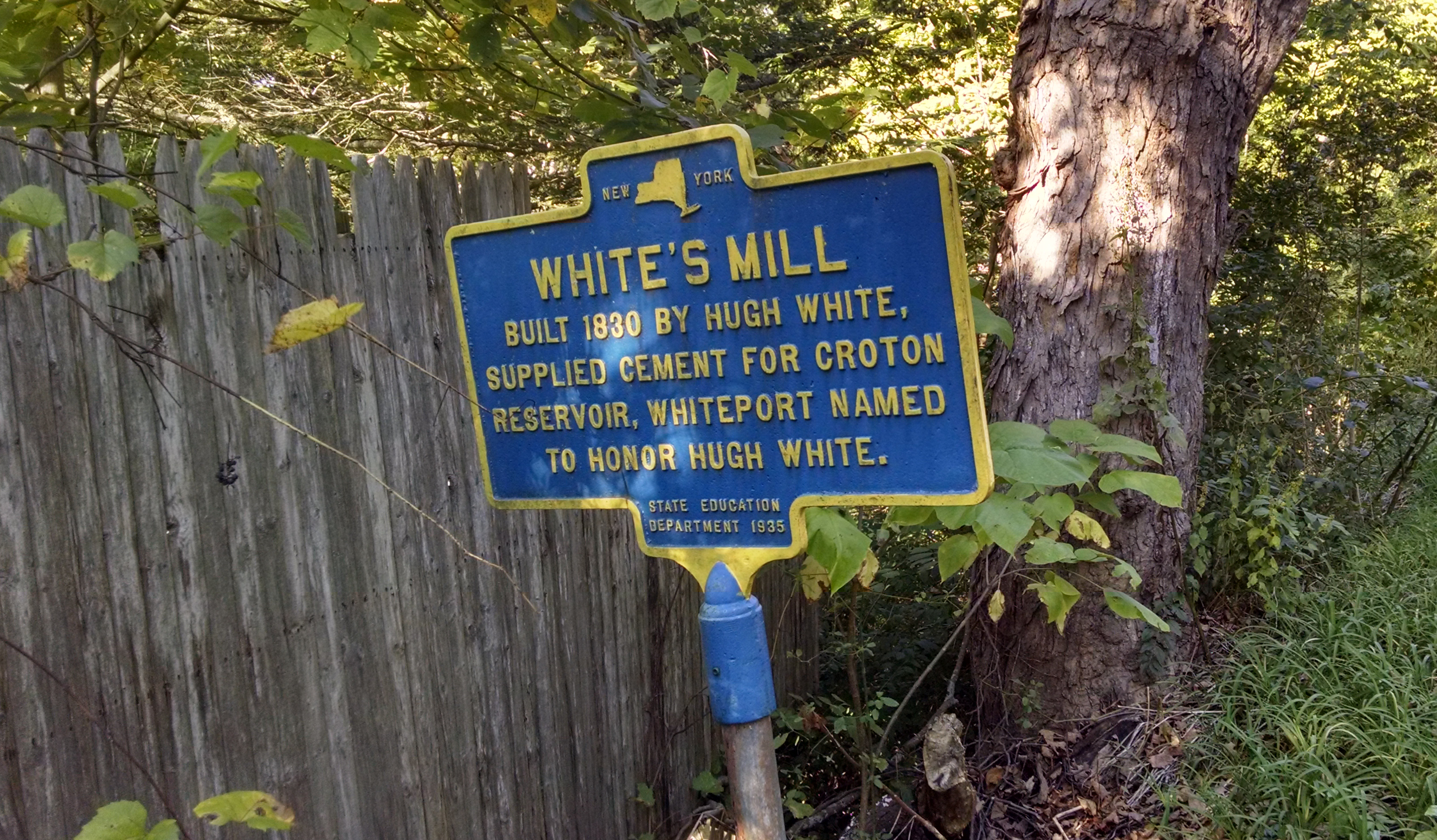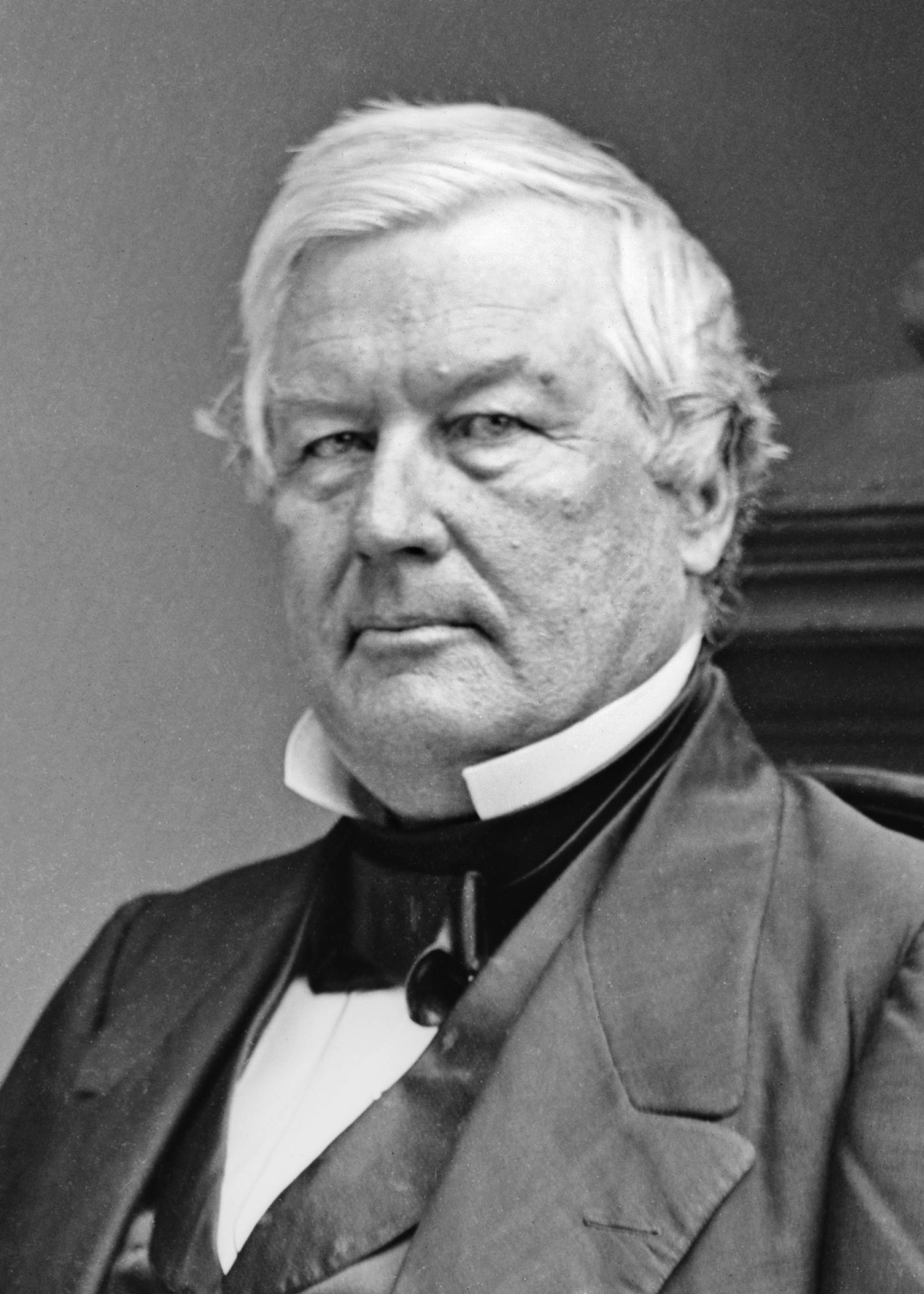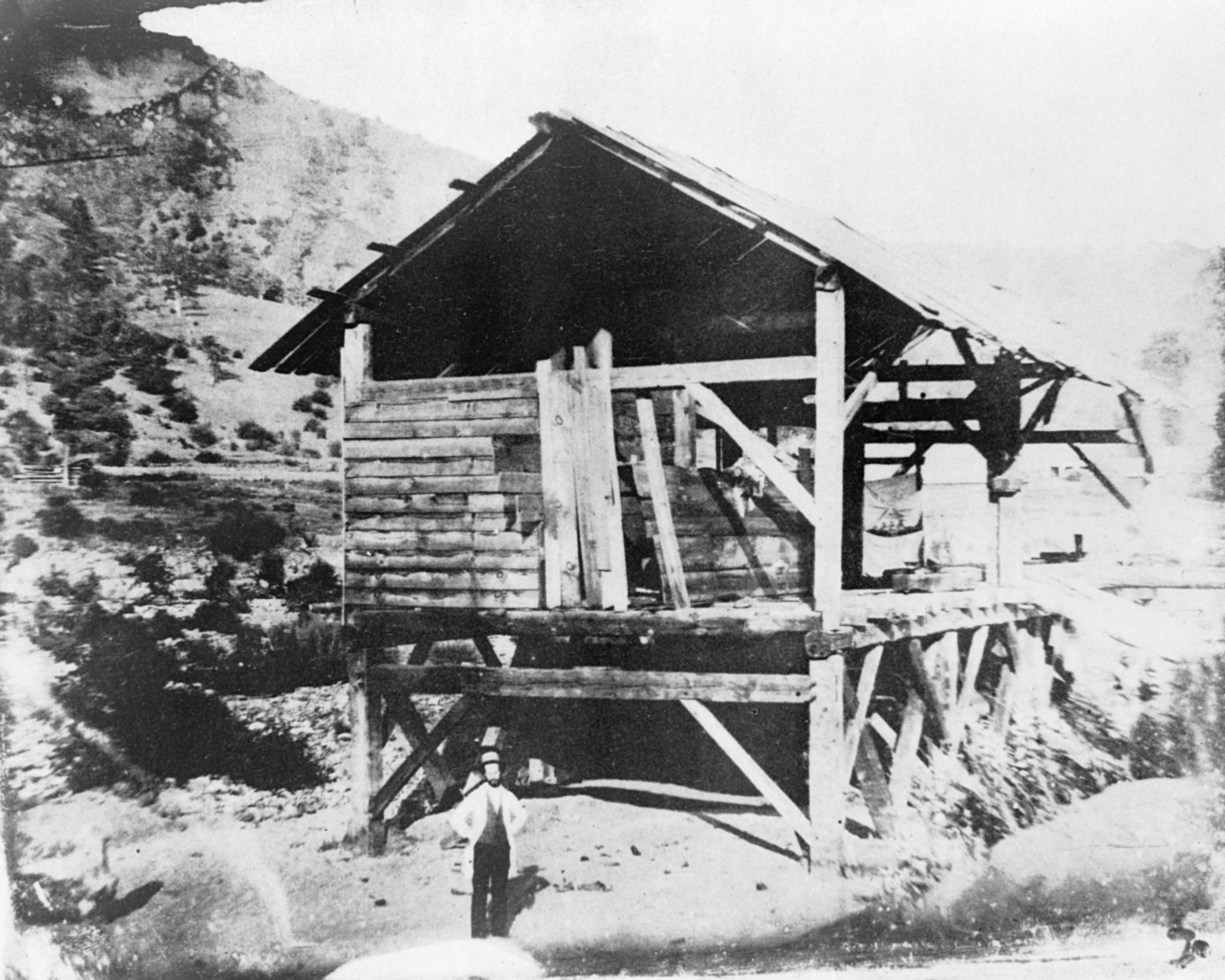|
Hugh White (New York Politician)
Hugh White (December 25, 1798 in Whitestown, Oneida County, New York – October 6, 1870 in Waterford, Saratoga County, New York) was an American businessman and politician from New York. Life He was the grandson of Hugh White, the founder and namesake of Whitestown. White attended the common schools. He graduated from Hamilton College in 1823. Then he studied law but did not practice. Instead, he entered business at Chittenango in 1825, and afterwards at Rondout. He was active in the building of the Michigan Southern and Northern Indiana Railroad. He moved to Cohoes in 1830. He was greatly interested in the development of water power from the Mohawk River. He established the Rosendale Cement Works. White was elected as a Whig to the 29th, 30th and 31st United States Congresses, holding office from March 4, 1845, to March 3, 1851. He was Chairman of the Committee on Agriculture (30th Congress). Afterwards, he resumed his business activities. Education White worked on his ... [...More Info...] [...Related Items...] OR: [Wikipedia] [Google] [Baidu] |
New York (state)
New York, officially the State of New York, is a state in the Northeastern United States. It is often called New York State to distinguish it from its largest city, New York City. With a total area of , New York is the 27th-largest U.S. state by area. With 20.2 million people, it is the fourth-most-populous state in the United States as of 2021, with approximately 44% living in New York City, including 25% of the state's population within Brooklyn and Queens, and another 15% on the remainder of Long Island, the most populous island in the United States. The state is bordered by New Jersey and Pennsylvania to the south, and Connecticut, Massachusetts, and Vermont to the east; it has a maritime border with Rhode Island, east of Long Island, as well as an international border with the Canadian provinces of Quebec to the north and Ontario to the northwest. New York City (NYC) is the most populous city in the United States, and around two-thirds of the state's popul ... [...More Info...] [...Related Items...] OR: [Wikipedia] [Google] [Baidu] |
Rondout, New York
Rondout (pronounced "ron doubt"), is situated in Ulster County, New York on the Hudson River at the mouth of Rondout Creek. Originally a maritime village, the arrival of the Delaware and Hudson Canal helped create a city that dwarfed nearby Kingston. Rondout would become the third largest port on the Hudson River. Rondout merged with Kingston in 1872. It now includes the Rondout-West Strand Historic District. History Rondout stands at the mouth of Rondout Creek, which empties into the Hudson through a large, protected tidal area. It was established by the Dutch in the seventeenth century as an Indian trading post. Furs brought from inland areas down the Rondout, Wallkill River and Esopus Creek were sent by boat down the Hudson River to New York City. The name derives from the fort, or redoubt, that was erected near the mouth of the creek. The Dutch equivalent of the English word redoubt (meaning a fort or stronghold), is reduyt. In the Dutch records of Wildwyck (now Kingston, Ne ... [...More Info...] [...Related Items...] OR: [Wikipedia] [Google] [Baidu] |
Burials At Albany Rural Cemetery
Burial, also known as interment or inhumation, is a method of final disposition whereby a dead body is placed into the ground, sometimes with objects. This is usually accomplished by excavating a pit or trench, placing the deceased and objects in it, and covering it over. A funeral is a ceremony that accompanies the final disposition. Humans have been burying their dead since shortly after the origin of the species. Burial is often seen as indicating respect for the dead. It has been used to prevent the odor of decay, to give family members closure and prevent them from witnessing the decomposition of their loved ones, and in many cultures it has been seen as a necessary step for the deceased to enter the afterlife or to give back to the cycle of life. Methods of burial may be heavily ritualized and can include natural burial (sometimes called "green burial"); embalming or mummification; and the use of containers for the dead, such as shrouds, coffins, grave liners, and ... [...More Info...] [...Related Items...] OR: [Wikipedia] [Google] [Baidu] |
People From Whitestown, New York
A person (plural, : people) is a being that has certain capacities or attributes such as reason, morality, consciousness or self-consciousness, and being a part of a culturally established form of social relations such as kinship, ownership of property, or legal obligation, legal responsibility. The defining features of personhood and, consequently, what makes a person count as a person, differ widely among cultures and contexts. In addition to the question of personhood, of what makes a being count as a person to begin with, there are further questions about personal identity and self: both about what makes any particular person that particular person instead of another, and about what makes a person at one time the same person as they were or will be at another time despite any intervening changes. The plural form "people" is often used to refer to an entire nation or ethnic group (as in "a people"), and this was the original meaning of the word; it subsequently acquired its us ... [...More Info...] [...Related Items...] OR: [Wikipedia] [Google] [Baidu] |
Hamilton College (New York) Alumni
Hamilton College is a private liberal arts college in Clinton, Oneida County, New York. It was founded as Hamilton-Oneida Academy in 1793 and was chartered as Hamilton College in 1812 in honor of inaugural trustee Alexander Hamilton, following a proposal brought forward after his death in 1804. Hamilton has been coeducational since 1978, when it merged with its coordinate sister school Kirkland College. Hamilton is an exclusively undergraduate institution, enrolling 1,900 students in the fall of 2021. Students may choose from 57 areas of study, including 44 majors, or design an interdisciplinary concentration. Hamilton's student body is 53% female and 47% male, and comes from 45 U.S. states and 46 countries. Hamilton places among the most selective colleges in the country, with an 11.8% acceptance rate. Athletically, Hamilton teams compete in the New England Small College Athletic Conference. History Hamilton began in 1793 as the Hamilton-Oneida Academy, a seminary founded b ... [...More Info...] [...Related Items...] OR: [Wikipedia] [Google] [Baidu] |
1870 Deaths
Year 187 ( CLXXXVII) was a common year starting on Sunday (link will display the full calendar) of the Julian calendar. At the time, it was known as the Year of the Consulship of Quintius and Aelianus (or, less frequently, year 940 ''Ab urbe condita''). The denomination 187 for this year has been used since the early medieval period, when the Anno Domini calendar era became the prevalent method in Europe for naming years. Events By place Roman Empire * Septimius Severus marries Julia Domna (age 17), a Syrian princess, at Lugdunum (modern-day Lyon). She is the youngest daughter of high-priest Julius Bassianus – a descendant of the Royal House of Emesa. Her elder sister is Julia Maesa. * Clodius Albinus defeats the Chatti, a highly organized German tribe that controlled the area that includes the Black Forest. By topic Religion * Olympianus succeeds Pertinax as bishop of Byzantium (until 198). Births * Cao Pi, Chinese emperor of the Cao Wei state (d. 226) * G ... [...More Info...] [...Related Items...] OR: [Wikipedia] [Google] [Baidu] |
1798 Births
Events January–June * January – Eli Whitney contracts with the U.S. federal government for 10,000 muskets, which he produces with interchangeable parts. * January 4 – Constantine Hangerli enters Bucharest, as Prince of Wallachia. * January 22 – A coup d'état is staged in the Netherlands ( Batavian Republic). Unitarian Democrat Pieter Vreede ends the power of the parliament (with a conservative-moderate majority). * February 10 – The Pope is taken captive, and the Papacy is removed from power, by French General Louis-Alexandre Berthier. * February 15 – U.S. Representative Roger Griswold (Fed-CT) beats Congressman Matthew Lyon (Dem-Rep-VT) with a cane after the House declines to censure Lyon earlier spitting in Griswold's face; the House declines to discipline either man.''Harper's Encyclopaedia of United States History from 458 A. D. to 1909'', ed. by Benson John Lossing and, Woodrow Wilson (Harper & Brothers, 1910) p171 * March &ndas ... [...More Info...] [...Related Items...] OR: [Wikipedia] [Google] [Baidu] |
Whites Mill
White is a racialized classification of people and a skin color specifier, generally used for people of European origin, although the definition can vary depending on context, nationality, and point of view. Description of populations as "White" in reference to their skin color predates this notion and is occasionally found in Greco-Roman ethnography and other ancient or medieval sources, but these societies did not have any notion of a White or pan-European race. The term "White race" or "White people", defined by their light skin among other physical characteristics, entered the major European languages in the later seventeenth century, when the concept of a "unified White" achieve universal acceptance in Europe, in the context of racialized slavery and unequal social status in the European colonies. Scholarship on race distinguishes the modern concept from pre-modern descriptions, which focused on physical complexion rather than race. Prior to the modern era, no Europe ... [...More Info...] [...Related Items...] OR: [Wikipedia] [Google] [Baidu] |
31st United States Congress
The 31st United States Congress was a meeting of the legislative branch of the United States federal government, consisting of the United States Senate and the United States House of Representatives. It met in Washington, D.C. from March 4, 1849, to March 4, 1851, during the 16 months of the Zachary Taylor presidency and the first eight months of the administration of Millard Fillmore's. The apportionment of seats in this House of Representatives was based on the Sixth Census of the United States in 1840. The Senate had a Democratic majority, while there was a Democratic plurality in the House. Major events * March 4, 1849: Zachary Taylor became President of the United States * June, 1849: Relations with France broke down as the French ambassador Guillaume-Tell de La Vallée Poussin engaged in "insulting and confrontational" behavior towards President Taylor, shortly after this a row erupted with France over reparations which France owed the United States. The President of F ... [...More Info...] [...Related Items...] OR: [Wikipedia] [Google] [Baidu] |
30th United States Congress
The 30th United States Congress was a meeting of the legislative branch of the United States federal government, consisting of the United States Senate and the United States House of Representatives. It met in Washington, D.C. from March 4, 1847, to March 4, 1849, during the last two years of the administration of President James K. Polk. The apportionment of seats in the House of Representatives was based on the Sixth Census of the United States in 1840. The Senate had a Democratic majority, and the House had a Whig majority. It was the only Congress in which Abraham Lincoln served. Major events * July 1, 1847: United States issued its first postage stamps * January 24, 1848: Gold found at Sutter's Mill, beginning the California Gold Rush * January 31, 1848: Washington Monument established * February 23, 1848: Former President John Quincy Adams, now a Congressman representing Massachusetts, dies in the Speaker's office after suffering a stroke in the House Chambers. * Jul ... [...More Info...] [...Related Items...] OR: [Wikipedia] [Google] [Baidu] |
29th United States Congress
The 29th United States Congress was a meeting of the legislative branch of the United States federal government, consisting of the United States Senate and the United States House of Representatives. It met in Washington, D.C. from March 4, 1845, to March 4, 1847, during the first two years of James Polk's presidency. The apportionment of seats in the House of Representatives was based on the Sixth Census of the United States in 1840. Both chambers had a Democratic majority. Major events * March 4, 1845: James K. Polk became President of the United States * October 10, 1845: The Naval School (later renamed the United States Naval Academy) opened in Annapolis, Maryland * December 2, 1845: President Polk announced to Congress that the Monroe Doctrine should be strictly enforced and that the United States should aggressively expand into the West. * April 25, 1846: Open conflict over border disputes of Texas's boundaries began the Mexican–American War Major legislation * May 1 ... [...More Info...] [...Related Items...] OR: [Wikipedia] [Google] [Baidu] |
Mohawk River
The Mohawk River is a U.S. Geological Survey. National Hydrography Dataset high-resolution flowline dataThe National Map accessed October 3, 2011 river in the U.S. state of New York. It is the largest tributary of the Hudson River. The Mohawk flows into the Hudson in Cohoes, New York, a few miles north of the city of Albany.Mohawk River , The Columbia Gazetteer of North America The river is named for the of the Iroquois Confederacy. It is a major waterway in north-central New York. The largest tributary, the Schoharie Creek, accounts fo ... [...More Info...] [...Related Items...] OR: [Wikipedia] [Google] [Baidu] |



_1938.jpg)






